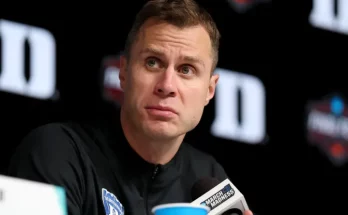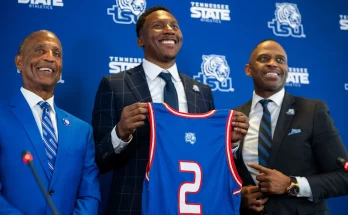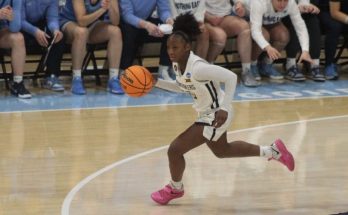South Carolina baseball is facing a significant blow this offseason as the program announced that their star shortstop is entering the transfer portal. This development has sent ripples through the college baseball community, raising questions about the future of the Gamecocks’ infield, their roster depth, and the challenges that head coach Mark Kingston now faces as he tries to rebuild and retool his squad for the 2026 season and beyond.
The player in question, widely regarded as one of the most dynamic and reliable performers in the Southeastern Conference (SEC), has been a cornerstone for South Carolina’s lineup over the past few seasons. Known not only for his exceptional defensive skills at shortstop but also for his consistent offensive production, his departure leaves a sizable gap in the Gamecocks’ infield and lineup. His decision to explore other opportunities in the transfer portal underscores an increasingly common trend in college sports where athletes seek new environments to better fit their personal, academic, or athletic goals.
The transfer portal, which was introduced by the NCAA in 2018 to provide athletes with a more streamlined way to transfer between schools, has since transformed the landscape of college athletics. While it offers players greater freedom and flexibility, it also presents new challenges for coaches who must contend with the constant possibility of losing key contributors. South Carolina’s loss of their star shortstop is emblematic of the high-stakes chess match now unfolding each offseason, as programs compete to retain talent and fill holes created by departures.
To understand the full impact of losing such a pivotal player, it’s important to consider his contributions both on and off the field. On defense, his range and quickness allowed him to cover vast amounts of ground at shortstop, turning routine plays into outs and making highlight-reel diving stops that energized the team and fans alike. His leadership in the infield also stabilized South Carolina’s defense, coordinating with the pitching staff and setting the tone for precision and intensity.
Offensively, this shortstop has been no slouch either. His bat brought a balanced mix of power and contact, giving the Gamecocks a reliable presence near the top or middle of the lineup. Over his tenure, he amassed impressive statistics in batting average, on-base percentage, and slugging, demonstrating a keen eye for pitches and the ability to deliver in clutch situations. His ability to get on base and drive in runs helped fuel South Carolina’s offense during critical stretches, often turning the tide in close games.
Beyond raw numbers, his intangibles made him invaluable to the program. His work ethic in practice, commitment to improvement, and steady presence in the clubhouse fostered a culture of accountability and camaraderie. Younger players looked up to him as a mentor, and his departure will undoubtedly leave a leadership vacuum that head coach Kingston must address.
Kingston, entering his eighth season at the helm of the Gamecocks, now faces the task of recalibrating his infield and reconfiguring his lineup. Recruiting efforts are already underway, but replacing a talent of this caliber is never straightforward. The transfer portal itself may offer some help, as Kingston and his staff search for a suitable replacement who can bring experience and skill to the position. Alternatively, the program could look internally to develop younger players who have been waiting in the wings.
However, relying on internal development can be risky, particularly in a competitive conference like the SEC where every game demands precision and resilience. The Gamecocks will need their next shortstop to step up quickly and fill the shoes of their departing star, or they risk slipping behind programs that have fortified their rosters through recruiting and transfers.
This loss also has strategic implications for South Carolina’s pitching staff. A strong shortstop is integral to infield defense, especially in turning double plays and cutting down runners attempting to steal bases. The new shortstop’s chemistry with pitchers and understanding of situational defense will be crucial in limiting opponents’ scoring opportunities. Without that established connection, there could be a transition period where communication lapses and errors increase, potentially costing the Gamecocks in tightly contested games.
South Carolina’s baseball history is rich, with multiple College World Series appearances and a passionate fan base that expects excellence each year. The program’s ability to recover from setbacks like this one will be tested in the coming months. Kingston’s leadership, the coaching staff’s player development skills, and the recruiting department’s agility in the transfer market will all play pivotal roles in determining whether the Gamecocks can maintain their status as SEC contenders.
This event also highlights a broader theme in college baseball and college sports in general — the growing influence of the transfer portal and athlete mobility. Players today are more empowered than ever to chart their own paths, leveraging the portal to find better opportunities for playing time, exposure, and personal growth. While this can be seen as a positive evolution in athlete rights and freedoms, it also creates a volatile environment for programs trying to build continuity and chemistry.
Some analysts believe this trend will continue to accelerate, with transfer portal activity becoming as critical to team construction as traditional recruiting. Coaches will need to balance recruiting incoming freshmen with acquiring experienced transfers who can make an immediate impact. The ability to successfully navigate this new terrain will be a key factor in program success moving forward.
For South Carolina, the immediate challenge is clear: fill the void left by their star shortstop as quickly and effectively as possible. Beyond just the technical and tactical aspects of replacing a player, there is also a psychological component. Losing a leader can shake a team’s confidence, especially when the player is as respected and integral as this shortstop. Kingston and his staff will need to rally the team, reinforce belief in their collective goals, and foster a renewed sense of purpose.
The fans, too, will be watching closely. South Carolina’s baseball supporters are passionate and knowledgeable, and they understand the significance of this loss. Patience may be required as the program navigates this transition, but expectations remain high. The Gamecocks have a proud tradition and the resources to rebound from this setback, but it will take time, effort, and a bit of luck.
In the coming weeks, all eyes will be on the transfer portal to see where this shortstop lands. His choice of destination will send signals about his career ambitions and may influence other players considering their own moves. Whether he opts for a program with a clearer path to professional baseball, a better fit academically, or a coaching staff that resonates with his goals, his decision will be a talking point throughout the college baseball world.
Meanwhile, South Carolina must turn the page and look forward. The offseason is a critical period for evaluations, adjustments, and growth. Kingston’s staff will be working tirelessly to identify and develop talent, focusing not only on physical skills but also on mental toughness and team chemistry. This will be a defining moment for the program — one that could shape the trajectory of South Carolina baseball for years to come.
It’s worth remembering that every program experiences turnover, and while losing a star player is never ideal, it can sometimes open doors for others. Young players may seize the opportunity to step into larger roles, showcasing their abilities and pushing the team forward. The transfer portal itself may also bring unexpected reinforcements who fit well into Kingston’s system and culture.
Ultimately, the story of South Carolina baseball losing their star shortstop to the transfer portal is a microcosm of the evolving college sports landscape. It’s a story of change, opportunity, challenge, and resilience. How the Gamecocks respond will define not only their 2026 season but also the identity and strength of the program moving ahead.
In the meantime, the South Carolina baseball community will be watching, hoping for a swift and successful transition. The passion of the players, coaches, and fans remains undiminished, even in the face of this setback. With determination, strategic planning, and a bit of good fortune, the Gamecocks will look to rebuild and continue their pursuit of excellence on the diamond.



